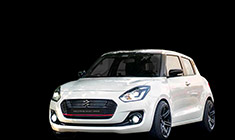News
What is the correct method to fill nitrogen in a car's tyres?
The entire load of a vehicle on fully deflated tyres would do more damage to the tyres than the benefit of having them filled with nitrogen.
BHPian MT_Hyderabad recently shared this with other enthusiasts.
I was at a petrol pump when I saw a car with two flat tyres and thought what an unfortunate incident.
Just as this thought crossed my mind, I saw this guy start filling air in one of the flat tyres. I immediately realised that this car was getting air swapped with nitrogen.
Perplexed, I was at a loss of words for this method. It appears to do more damage to the tyre than the benefit of N2 in them. It must have definitely broken something inside the tire with the full load of the car plus at least one sitting passenger on the completely deflated tyres.
Is this method of air swap correct?
Here's what BHPian HappyWheels had to say about the matter:
Not the best of practices, but nothing bad is going to happen. This is the fastest jugaard approach.
And, this momentary resting of rims on the tyre is not going to cause any damage. Much less of a pain a tyre goes through when it goes flat due to a puncture.
Here's what BHPian Mr.Boss had to say about the matter:
Best solution is to deflate and fill Nitrogen during wheel balancing, where the wheel is off the vehicle without any load.
In the above case, the damages are obvious but very minimal. Tire sidewalls take a higher impact during running (especially during a flat tire condition).
Here's what BHPian SS80 had to say about the matter:
Is there a real-world difference between the two air-filling options? I mean a major portion of our normal air is nitrogen. I also highly doubt if a petrol bunk machine can extract pure nitrogen from the air. May be possible in a lab, but not at this scale and place.
Here's what BHPian aviator1101 had to say about the matter:
Whether something goes wrong or not, it is more so a matter of convenience for the tyre shop guy and one should not allow such experiments/jugaad with own car. After all it's rubber, doesn't take much time for sidewalls to develop a crack.
With my little experience, what I have seen is either the trolley jacks being used in tyre shops to lift the axle/tyres before completely deflating them or changing from air to nitrogen during wheel balancing/tyre rotation.
I also had this inhibition about the efficacy of using nitrogen, but after I installed the TPMS in my car, I realised that Nitrogen keeps the tyre temperature lower by at least 4-5°. The difference is more evident while travelling on concrete highways on hot sunny days.
The inert gas actually (humbly) does its job.
Here's what BHPian narayanang76 had to say about the matter:
This isn't the best method, but it is also not going to create major damage to the tyre. Tyre can withstand such short-duration abuses when stationary. If a car gets a flat tyre for a few hours when parked, there is a lesser chance of tyre damage, compared to getting a flat tyre when the vehicle is moving, where chances of tyre damage are high.
Best method to replace air in tyres is either with the vehicle lifted with those trolley jacks or when wheels are removed during wheel balancing/alignment.
Check out BHPian comments for more insights and information.











.jpeg)

_7.jpg)





